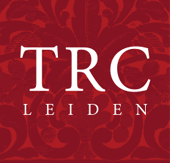There are various forms of textiles that are superficially related to velvet. These include warp and weft-piled weaves, as well as glued forms. The most common are:
Chenille
Chenille is the French word for a caterpillar and reflects the hairy nature of the material. Chenille is a form of tufted yarn that is created by weaving a piece of tabby weave cloth (the chenille blanket) with the warp ends grouped into sets, with a gap between the sets. The ‘blankets’ are then cut along the warp in order to make strips that can be used as a yarn. These strips are ‘hairy’ because of the cut weft threads. The chenille threads can then be re-woven into a velvet-like material.

The word corduroy may derive from French cord du roi, meaning ‘king’s cord’. It is a strong durable fabric with vertical cut-pile stripes. It is woven with weft threads that float over three or more warp threads followed by a section of tabby or twill weave. After the cloth is woven the floats are cut, allowing them to form ridges or cords. Compare TRC 2018.2511 and TRC 2018.2512.
Fleece
A type of cloth with a thick, heavy, fleece-like surface. By the end of the 20th century the term fleece was associated with synthetic micro-fibres woven as a supplementary thread into a knitted ground. The extra thread is cut, thereby creating a compact, piled surface. Sometimes there is a pile on both sides of the cloth.

Flock is made from old rags, clippings or cloth waste, which is cut and then ground into very short fibres. Some form of adhesive is then applied to a surface (paper, cloth, leather, etc) and the flock scattered over it. This produces a textured surface that superficially looks like a velvet. Compare also TRC 2017.0518, TRC 2017.0219, TRC 2017.0520, TRC 2017.0521, TRC 2017.0522, and TRC 2017.0523.
Plush
The term plush derives from the French word peluche, meaning plush or fluff (Latin: pilus). It is a warp pile fabric with a cut pile surface that is significantly longer than a velvet pile and less closely woven. Compare TRC 2018.0572, and TRC 2018.0574.
Terry towelling
Terry towelling or terry cloth is a woven fabric with a loop pile on one or both sides. The loops are in the warp and left uncut. The loops are much longer and more loosely woven than with velvet.

